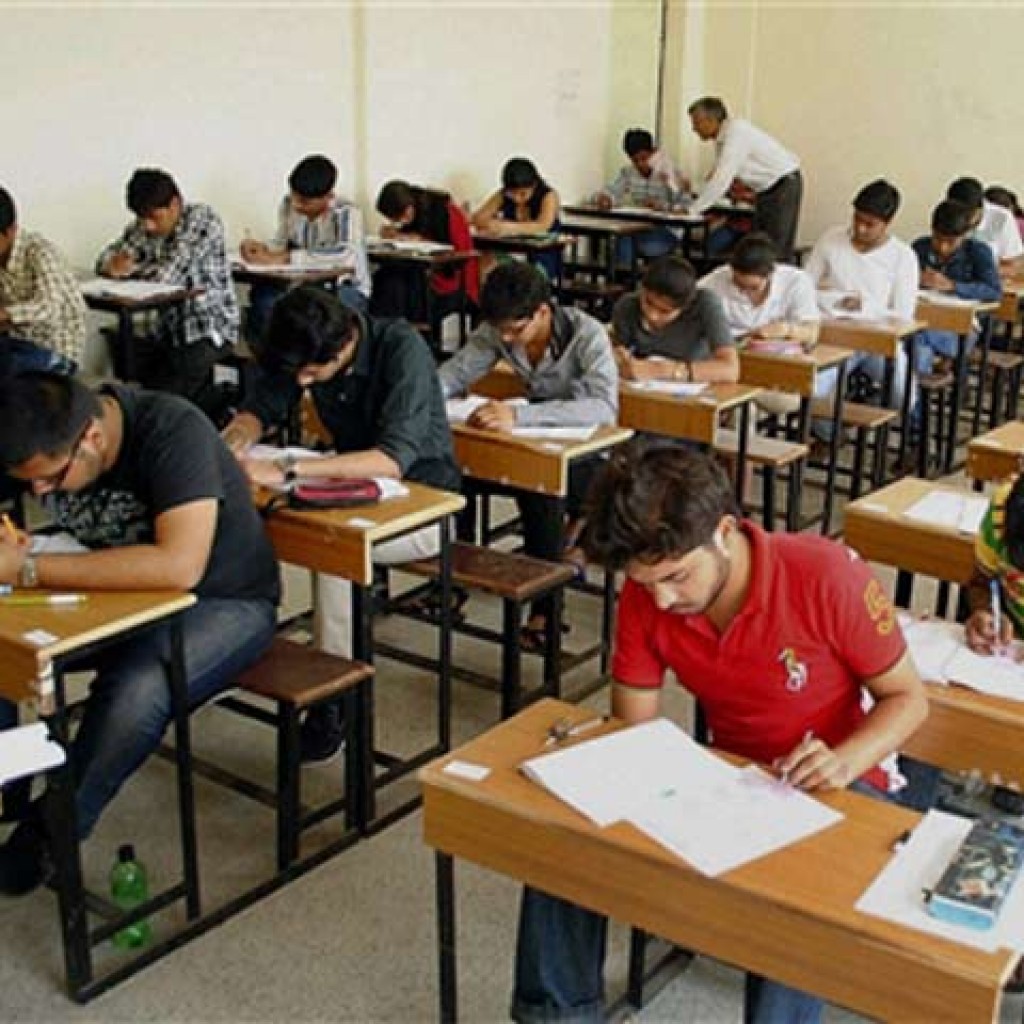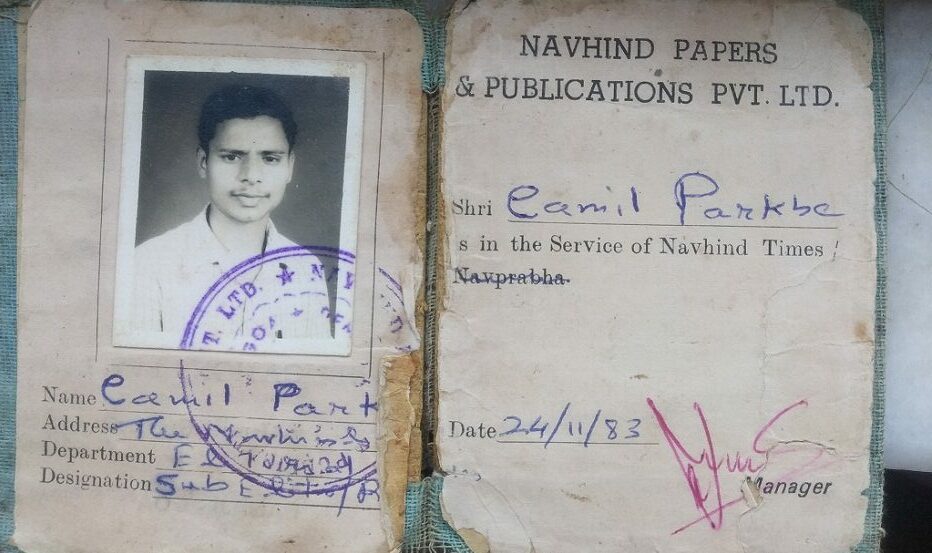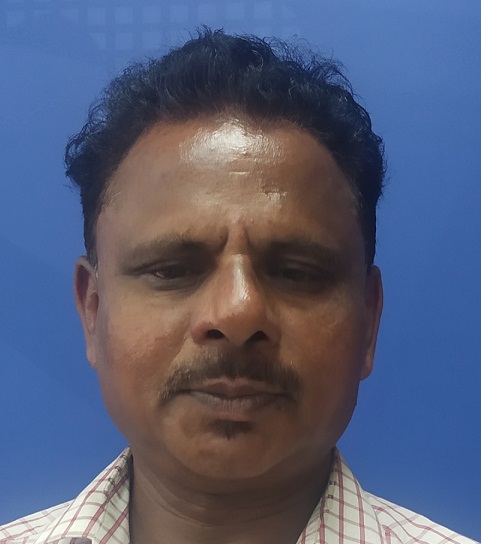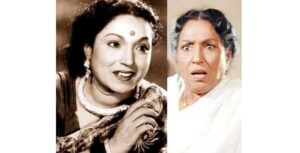‘Congrats, you are the Goa SSC exam topper!’

Camil Parkhe
As the campus reporter of The Navhind Times in Goa, the last week of May used to be very stressful for me. During this period, Goa, Daman and Diu Board for Secondary and Higher Secondary Education used to announce the results of the SSC examination. The press conference of the education board’s chairman was an annual function at the Mandovi Hotel located on the banks of the Mandovi River in Panjim. Suresh Amonkar was then chairman of the newly constituted Goa education board. After handing over copies of the SSC examination results to the journalists, Board Chairman Amonkar would speak about the salient features of the results and this was immediately followed by lunch. In Goa at that time, there used to be a drinking session at every press conference, even in the afternoon!
Unfortunately, I was not able to enjoy this sumptuous meal consisting of a variety of dishes including king prawns and other fishes, and chicken and of course, the rich quality drinks including feni. This was because as soon as I got hold of the printed copy of the SSC exam results, I had to leave the venue and rush out for conducting the post-result interviews. Of my campus reporting throughout the year, that day used to be one of the most stressful, and also equally, the most professionally satisfying.
This was the post-1981 period of my campus reporting. At that time, the total number of SSC students of the Goa Board was around 12,000 and the number of HSC students was around 4,000! At that time, like Maharashtra, all the dailies in Goa used to publish the complete list of successful SSC and HSC students. The exact date of the examination results was not announced in advance. After receiving a copy of the examination results, it was my responsibility to visit the towns and villages in Goa to interview and collect photographs of the top 10 students on the merit list. After travelling all over Goa, I used to return to The Navhind Times office in Panjim in the evening and file my news copy within the deadline.
“At least on this day of the whole year, Camil really works hard, does some good work,” Pramod Khandeparkar, chief reporter of our newspaper, used to say in half-jest and also as a matter of fact.
I had been doing my postgraduate studies while working for the newspaper. I used to daily report directly to News Editor M. M. Mudaliar, who had given me a very long rope in my reporting work. Therefore, Khandeparkar and Senior Correspondent Ravi Prabhugaonkar never counted me for the day-to-day news reporting.
On coming out of the Mandovi Hotel, I would drop the copy of the examination results in my Shabnam bag and rush to the nearest motorcycle pilot. Motorcycle pilot service was then a unique travel facility found only in Goa in the country. Just as you have autorickshaw stands at intersections in various cities, in those days motorcycle pilots used to wait for passengers with their black-and-yellow motorcycles. Riding pillion, I used to go to Mapusa, Margao, Bicholim, Vasco, and Caccona, giving preference to the first and second rank students.
My schedule was fixed. First, I went to the school of the student who stood first in the merit list. At the school, I would get the residential address of the student, and the photo of the topper boy/ girl would be literally plucked from the school’s register. In the 1980s, there was no guarantee that students or their parents would have these photos, and there was no way to photograph the topper there.
What was special was that during these seven-eight years when I worked as the campus reporter, no one had ever mistrusted me or demanded to know my credentials, asked for my identity card or a visiting card as a reporter. I am now especially grateful to those school principals and other others who without any hesitation, pulled out the photos of the students pasted in the school registers and handed them over to me, a newspaper reporter. Obviously, they too shared the joy of their school student appearing in the toppers’ list of the Goa Board!
The reaction at the residence of the topper students and their family members was almost the same.
“Hello, I am Camil Parkhe, a reporter of The Navhind Times. Congratulations, you have topped in the SSC examination in the Goa Board!” This used to be my opening remark.

The screams of amazement and cheers of joy that followed in every house I visited were identical and on expected lines.
The bewildered family members would take some time to recover from the shock and then force me to have some sweets. If it was a Catholic family, I would be treated to a glass of cold beer, or sip some home-made wine and cake. The topper students had to be interviewed in the meantime. My questions were almost identical for all the toppers (I doubt they have changed over the years) – about what was their ambition, their study schedule and hobbies… The answers by these toppers were also often similar – their stated ambition those days being to become doctors and engineers.
But the hospitality at each family had to be confined to a few minutes as I had to leave immediately to complete the rest of the work. Like the lunch at the Goa Board’s press conference at the Mandovi Hotel, the hospitality at these toppers’ homes also had to be forfeited. Similar incidents used to take place at the homes of other meritorious students. Sometimes I would find that the house of the topper was locked, the student’s family apparently having gone to Mumbai or elsewhere during the summer vacation. In that case, his/ her photo taken from the school office would come in handy.
By late in the evening, around 6.30 pm, I would return to the newspaper office in Panjim. Invariably, I would have failed to get the photo or interview of the second or seventh of the first 10 meritorious students. In such a case, a photo sent by the local correspondent of Navprabha, the Marathi daily twin sibling of The Navhind Times, used to save my reputation. We, at our twin newspapers, used to compete with Marathi dailies Panjim-based Gomantak or Margao-based Rashtramat for publishing maximum photos and interviews of the topper students. Moreover, sharing a photo with others was impossible in the time-consuming photo block-making era.
The Union Territory of Goa, Daman and Diu was then only a single district, consisting of 10 talukas in Goa and one taluka each in Daman and Diu, located far off some hundreds of kilometres away near Gujarat. The Portuguese had ruled over Goa, Daman and Diu until December 1961 and this was the only reason why the three regions, though geographically separated and culturally unrelated, were united into a union territory. Even the chief minister of this union territory seldom visited the Daman and Diu talukas. At that time, not a single student from the rural talukas of Daman and Diu appeared in the Goa Board’s SSC or HSC merit lists. (After Goa became a full-fledged state in 1987, its ties with Daman and Diu were severed for good.)
Similar episodes were repeated when the Goa Board announced its HSC examination results a few weeks later. My travel itinerary however was restricted in this case as there were very few higher secondary units, located only in some towns in Goa at that time.
After the results of the 10th and 12th boards, I used to submit the bill for the expenses of the motorcycle pilot service to the accounts department with the approved signature of News Editor Mudaliar, This was always followed by the same question-and-answer session every year.
“Motorcycle pilot travel fare of Rs. 300 on a single day? Why did you hire a motorcycle pilot? Could you not travel by bus?”
What could have been my answer to this question? At that time, according to the Justice Palekar Wage Board Commission, my monthly salary was Rs. 530. But as the bill was approved by the news editors, I used to get that amount.
In the whole region of Goa, I was the only reporter who used to travel to various towns and also villages like Mapusa, Bicholim, Ponda, Agassaim, Sancoale and Mhardol to get interviews and photos of the SSC and HSC toppers. No other reporter repeated this feat after me. This was because of my overzealousness and willingness to work hard. The other dailies – Gomantak, Navprabha and Rashtramat relied on their respective local stringers to send photos and interviews of the toppers. At that time, The Navhind Times – the only English newspaper in Goa – had its stringers only in Margao and Vasco.
A few decades ago, there were no divisional education boards in Maharashtra. On receipt of the results copy from the Education Board, the newspapers in Maharashtra used to publish the numbers of all successful candidates in their next day’s edition. On that day, circulation of all the newspapers used to increase tremendously. However, today’s generation will not believe that the result of the board’s SSC exam was around 30 per cent at that time. Therefore, the numbers of only 30 per cent of the students who had passed were printed in the dailies.
Most of the students used to give up education after failing in mathematics and English subjects. I believe the result of my 1975 SSC batch in Maharashtra was around 27 per cent. I am nevertheless happy to this day that I managed to pass the SSC exam after securing 53 of the total 150 marks in mathematics!
Later, divisional education boards were set up in Maharashtra, and only the SSC and HSC results of that particular division were published in the newspapers in that division. After a few years, all the newspapers also stopped publication of the complete results as these results were available for the students on the same day.
In today’s era of the Internet and mobiles, the results of all the public and competitive examinations are available online. In keeping with the technological revolution, the functioning in the journalism profession and newspaper industry is also changing. Forty years ago, the telegram was the fastest communication service.
At that time, newspapers were instrumental in informing thousands of students about the SSC and HSC results. Now there is no such need.
(Camil Parkhe is a senior journalist based in Pune. He started his journalism career in Goa and has worked in various newspapers in different capacities.)









